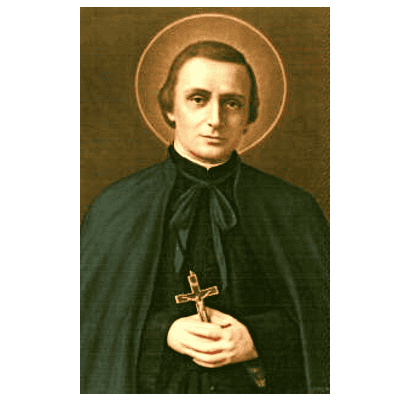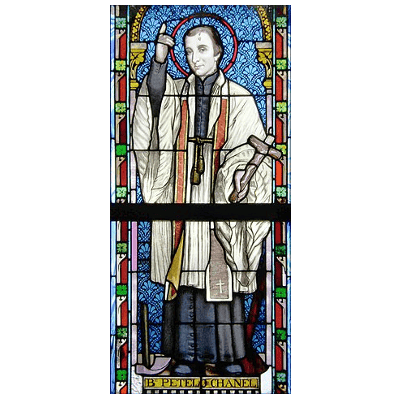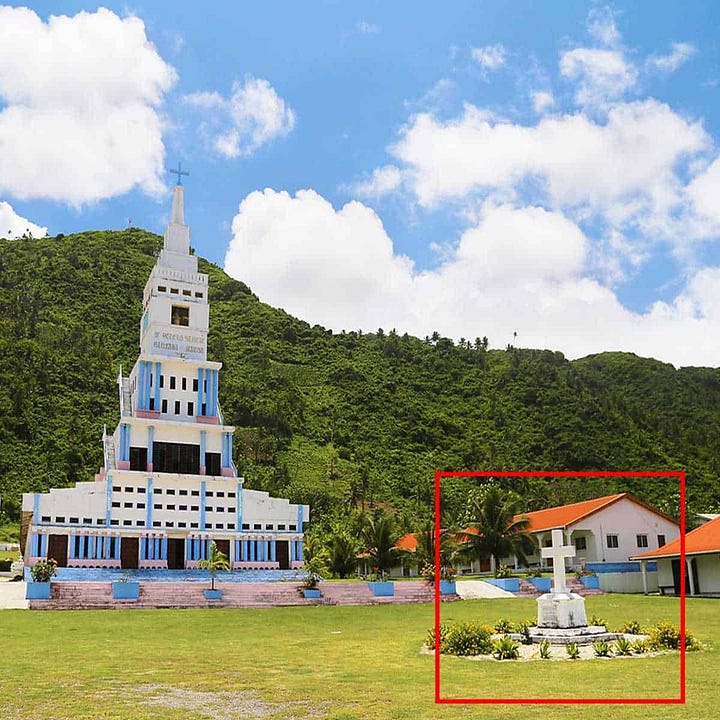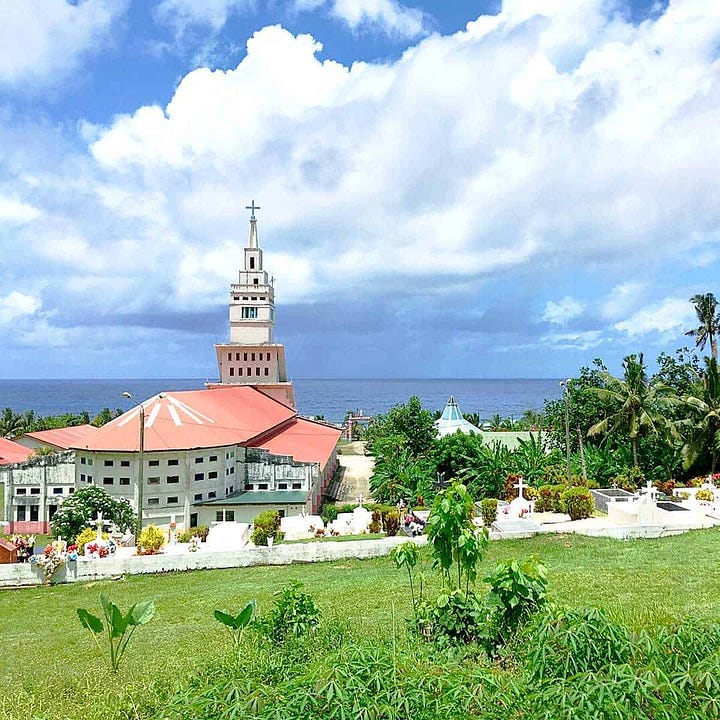The Patron Saint of Failure
When the annals of effective Christian missionaries are written, Peter Chanel will probably not be on the list – at least, not based on the success of his missionary work during his lifetime.
The young French priest volunteered to go to Oceania and bring the Catholic faith to the Pacific islanders in need of salvation. A trading ship dropped him and a lay brother off on the tiny island of Futuna (today Wallis and Futuna, NE of Fiji).
And in gratitude for his three-and-a-half years of charitable service to the natives there, they clubbed him to death.
At the time of his martyrdom, Fr. Chanel was only thirty-eight years old and had not made a single convert to the faith. Or if he had, any gains he had made were wiped out by his brutal death.
This is the very definition of failure.
Canonized for Failure?
Peter Chanel is now a saint of the Catholic Church (his feast day is today, April 28th). Pope Pius XII canonized him in 1954.
But does that mean the Church canonizes failure? Hardly. There is much more to that missionary’s life than his seemingly futile efforts.


Chanel was the fifth of eight children born to a farming family in southern France in 1803. The country was ruled by Napoleon Bonaparte at the time and was suffering the terrible aftermath of the French Revolution.
The pious child, Peter, had no human gifts that any chronicler of his life ever thought to point out. His nine years of priestly work in his diocese of in France were largely unexceptional. He even had a failed assignment as Rector of the local seminary.
A Missionary at Heart
The one thing that marked his priestly vocation, though, was his desire to spread the Catholic faith to those who had never received it. From a very early age he wanted to “make disciples of all nations” (Matthew 28:19), as Christ commanded, and he would have his chance.
The Pacific islands had been officially declared mission territory by Pope Gregory XVI in 1836. Peter, who was thirty-three years old by then, joined the newly formed missionary order, the Marists, and off to the Pacific he went.
He was one of a group of seven men who departed on Christmas Eve that year after consecrating themselves to the Virgin Mary at a local shrine.
A New Life and Terrible Suffering
Given the difficulties of sea travel in that era, it took Peter and his companions almost a year to arrive in the Pacific. The other problem was that they had no destination, no missionary training, no ability to speak the local languages, and virtually no support.
One of his companions died during the journey, four were dropped off on a larger island where missionary efforts were already underway.
Peter and a twenty-one-year-old lay brother were then deposited on the tiny Polynesian island of Futuna (eight miles long and five miles wide), which had a tribal population of only a few hundred. (Below: Map of Voyage from France to Futuna.)
To make matters worse, the people were split into two factions at the time, and they were at constant war with each other. Imagine beginning a new life under those circumstances!
Added to Chanel’s difficulties were his slow grasp of the language, malnutrition, disease, and the pervasive immorality of the local tribesmen, which included the practice of a primitive form of abortion.
He was dependent on the local king, Niuliki, for his survival, and the king was the high priest of a religion that was a kind of demon-worshiping cult. Imagine.
A Brutal Death
This fact turned out to be Peter Chanel’s undoing. After three-and-a half years of his peaceful presence among them and his self-sacrificing charity, Fr. Chanel began to win over the sentiments of the community.
It looked as if the people would eventually accept Baptism, but that very possibility threatened their entire religious-cultural system, which had the king at the center and pinnacle of power.
And the straw that broke the camel’s back was also a very personal issue for the king.
When the king’s son announced that he was going to receive Baptism from the missionary, the king complained about Chanel’s evangelizing efforts in the presence of his chieftains.
Like King Edward II of England with Thomas Beckett (the martyred Archbishop of Canterbury, 1172), Niuliki insinuated out loud that he would be glad to be rid of the meddlesome cleric.
The death blows were not long in coming. On April 28th, 1841 a small group of armed men broke into his shack and brutally clubbed and hacked Fr. Chanel to death out of hatred for the Christian faith he preached.
Actually, he was killed by the blows of a primitive axe. The very axe that smashed the priest’s skull is in the possession of the Marist Fathers today. An image of it posted on their website looks like this:
The priest’s lay brother companion escaped to safety and told the story to those who rescued him. It took another year for word of Chanel’s death to reach France.
Martyrdom and Miracle
As Providence would have it, Niuliki himself did not survive six more months. He died of a terrible disease. Worse yet, the king’s assistant, Musumusu—the one who actually dealt the death blow to Fr. Chanel—became the new king.
It was at this point that a miracle of God’s grace washed over the tiny Pacific isle. When the original lay brother came back with two new missionary priests the following year, the whole nation asked to be baptized!
Despite some obstacles such as language and disease, the new missionaries baptized the entire population of the island within a short period of time.
They also noted that the stated motive for baptism was always the same: Fr. Peter Chanel’s preaching and example.
A Repentant Murderer
There is even a more fascinating follow-up story that comes from the oral traditions of the Futunan people. A French warship brought the new missionaries to the island, and Musumusu expected the ship to make war on him in reprisal for the death of Fr. Chanel.
But the missionaries forbade any retaliation whatsoever. The king – the murderer of Peter Chanel – was so impressed by the example of Christian forgiveness that, in time, even he accepted Baptism.
So deep was Musumusu’s repentance and humility that, at the end of his life, he asked to be buried immediately in front of the shrine they had built to Fr. Chanel so that visitors would walk over his grave when they paid the martyr their respects.


By Their Fruits You Will Know Them
We must always remember that the Church’s definition of “success” is not the same as the world’s. In the logic of the Kingdom of God, success is found not always in extraordinary human acts but primarily in the fruits of virtue, and sometimes even in death.
This dynamic is a spiritual law, not a worldly expectation of outcomes. From seeming failure, in human terms, comes spiritual success, provided that Christ is the motive and the basis of all one’s human efforts.
Was St. Peter Chanel’s mission a total failure? The answer depends on whether you look at his mission with the eyes of faith or the eyes of the world.
——
Source: Website dedicated to St. Peter Chanel.
Photo Credits: Feature Image (Gaugin, The Gossip of the Potins Women, Tahiti, 1891, public domain); Via Wikipedia: Portrait (Ökumenisches Heiligenlexikon); Stained Glass from Church in Tonga (Tauʻolunga); Voyage Map (Rundvald); Basilica front view with grave and back view (Vogensto).
Feature image: Paul Gaugin, The Gossip of the Potins Women, Tahiti, 1891. Public domain.








